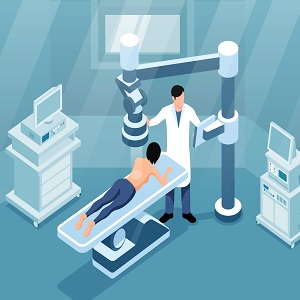The electrical hospital beds market is a crucial segment of the global healthcare industry, driven by the need for improved patient care and comfort. These beds are equipped with electric motors that allow for easy adjustments in the bed’s height, as well as the head and foot sections, enhancing both patient comfort and care. Electrical hospital beds are essential in various healthcare settings, including hospitals, nursing homes, and home care environments, providing benefits such as better positioning, reduced risk of pressure ulcers, and improved patient outcomes.
The market is primarily driven by the increasing global aging population, which has led to a higher demand for advanced healthcare solutions. As older adults are more likely to suffer from chronic conditions requiring extended hospital stays, the demand for adjustable and comfortable beds has risen significantly. Additionally, the growing prevalence of chronic diseases such as diabetes, cardiovascular diseases, and respiratory disorders further fuels the need for these beds, as they offer enhanced care for patients with limited mobility.
Technological advancements in healthcare have also contributed to the growth of the electrical hospital beds market. Modern beds come with advanced features like integrated monitoring systems, bed exit alarms, and pressure relief surfaces, which improve patient safety and healthcare delivery. Moreover, the shift towards home healthcare and the increasing demand for personalized patient care are further expanding the market.
However, challenges such as the high cost of advanced beds, maintenance complexities, and stringent regulatory requirements pose potential restraints. Despite these challenges, the market is expected to grow steadily, driven by ongoing innovations and the increasing need for high-quality patient care.
Get a sample copy of the report to know more https://medicalmarketreport.com/report/global-electrical-hospital-beds-market/#requestForSample
Key Market Segments
Type
General Beds
Birthing Beds
Pediatric Beds
Bariatric Beds
Pressure Relief Beds
Application
Hospitals
Home Care Settings
Elderly Care Facilities
Ambulatory Surgical Centers
Key Regions
- North America (The US, Canada, Mexico)
- Western Europe (Germany, France, The UK, Spain, Italy, Portugal, Ireland, Austria, Switzerland, Benelux, Nordic, Rest of Western Europe)
- Eastern Europe (Russia, Poland, The Czech Republic, Greece, Rest of Eastern Europe)
- APAC (China, Japan, South Korea, India, Australia & New Zealand, Indonesia, Malaysia, Philippines, Singapore, Thailand, Vietnam, Rest of APAC)
- Latin America (Brazil, Colombia, Chile, Argentina, Costa Rica, Rest of Latin America)
- Middle East & Africa (Algeria, Egypt, Israel, Kuwait, Nigeria, Saudi Arabia, South Africa, Turkey, United Arab Emirates, Rest of MEA)
Key Market Players included in the report:
Linet Invacare
Hill Rom
Paramount Bed
Span America Medical Systems
Medline Industries
If You Have Any Questions About This Report, Please Reach Out to Us @ https://medicalmarketreport.com/report/global-electrical-hospital-beds-market/#inquiry
Drivers
1. Aging Global Population
The rapidly aging global population is significantly driving the demand for electrical hospital beds across healthcare settings.
2. Increasing Chronic Diseases
The rising prevalence of chronic diseases necessitates prolonged hospital stays, boosting the need for electrical hospital beds.
3. Technological Advancements
Ongoing technological advancements are leading to the development of more sophisticated electrical hospital beds, enhancing patient care.
4. Shift to Home Healthcare
There is a growing shift towards home healthcare, which is increasing the demand for user-friendly electrical hospital beds.
Trends
1. Integration of Smart Technologies
The integration of smart technologies into hospital beds is a prominent trend, enhancing patient monitoring and care efficiency.
2. Focus on Eco-friendly Materials
The market is seeing a trend towards the use of eco-friendly materials, reflecting a broader push for sustainability in healthcare.
3. Compact and Aesthetic Designs
There is an increasing trend towards compact and aesthetically pleasing designs, especially for beds used in home healthcare.
4. Remote Monitoring Capabilities
The incorporation of remote monitoring capabilities in electrical hospital beds is becoming more common, improving patient outcomes.
Opportunities
1. Expansion in Emerging Markets
Emerging markets offer significant growth opportunities as healthcare infrastructure in these regions continues to expand rapidly.
2. Customized Bed Solutions
There is a growing opportunity for manufacturers to offer customized bed solutions that cater to specific patient needs.
3. Technological Partnerships
Collaborations between bed manufacturers and tech companies present opportunities for innovation in bed functionalities and features.
4. Government Healthcare Initiatives
Government initiatives to improve healthcare infrastructure create opportunities for increased adoption of electrical hospital beds.
Restraints in the Electrical Hospital Beds Market
1. High Costs
The high cost of advanced electrical hospital beds is a major restraint, particularly in low-income regions.
2. Complex Maintenance Requirements
Electrical hospital beds often require complex maintenance, which can be a barrier for healthcare providers with limited resources.
3. Stringent Regulatory Approvals
The stringent regulatory approval process for medical devices can slow down the introduction of new electrical hospital beds.
4. Limited Awareness in Developing Regions
In some developing regions, limited awareness of the benefits of electrical hospital beds poses a restraint on market growth.
Drivers
1. Aging Global Population
One of the most significant drivers of the electrical hospital beds market is the rapidly aging global population. As the number of elderly individuals continues to rise, there is an increasing demand for healthcare solutions that cater to their unique needs. Older adults often suffer from multiple chronic conditions and mobility issues that require extended hospital stays and specialized care.
2. Increasing Prevalence of Chronic Diseases
The rising prevalence of chronic diseases such as diabetes, cardiovascular diseases, and respiratory disorders is another key factor driving the demand for electrical hospital beds. Patients with chronic conditions often require long-term care, which includes frequent adjustments in bed positioning to prevent complications such as pressure ulcers. Electrical hospital beds, with their easy-to-use controls, allow healthcare providers to reposition patients with minimal effort, improving patient outcomes and overall quality of care.
3. Technological Advancements in Healthcare
Technological advancements have played a significant role in the growth of the electrical hospital beds market. Modern beds are equipped with features like integrated monitoring systems, bed exit alarms, and pressure-relief surfaces. These innovations not only enhance patient safety but also improve the efficiency of healthcare delivery. For example, integrated monitoring systems can alert healthcare providers to potential issues, allowing for timely interventions.
4. Shift to Home Healthcare
The healthcare industry is witnessing a shift towards home healthcare, driven by the desire for more personalized and cost-effective care. This shift is increasing the demand for electrical hospital beds designed for home use. These beds are often more compact and user-friendly, making them suitable for home environments.
Trends
1. Integration of Smart Technologies
A prominent trend in the electrical hospital beds market is the integration of smart technologies. Smart beds are equipped with sensors and connectivity features that allow for real-time monitoring of patient vitals and movements. These beds can alert healthcare providers to potential issues such as patient falls or bedsores, enabling timely intervention.
2. Focus on Eco-friendly Materials
Sustainability is becoming increasingly important in the healthcare industry, and the electrical hospital beds market is no exception. Manufacturers are focusing on using eco-friendly materials in the production of hospital beds, reflecting a broader push for sustainability in healthcare. This trend is driven by the growing awareness of environmental issues and the need to reduce the carbon footprint of healthcare facilities. As sustainability becomes a key consideration in healthcare purchasing decisions, the demand for eco-friendly electrical hospital beds is expected to rise.
3. Compact and Aesthetic Designs
As the trend towards home healthcare continues, there is an increasing demand for hospital beds that are not only functional but also aesthetically pleasing. Compact and aesthetically designed beds are particularly popular in home care settings, where patients and caregivers prefer beds that blend seamlessly with home interiors.
4. Remote Monitoring Capabilities
Another growing trend in the electrical hospital beds market is the incorporation of remote monitoring capabilities. With the rise of telemedicine and remote healthcare services, there is an increasing demand for beds that allow healthcare providers to monitor patients remotely. These beds are equipped with sensors and connectivity features that transmit patient data to healthcare providers in real time.
Opportunities
1. Expansion in Emerging Markets
Emerging markets present significant growth opportunities for the electrical hospital beds market. Countries in Asia, Latin America, and Africa are investing heavily in healthcare infrastructure, driven by rising healthcare demands and government initiatives. As these regions develop their healthcare facilities, the need for advanced medical equipment, including electrical hospital beds, is expected to increase.
2. Customized Bed Solutions
The growing demand for personalized healthcare solutions offers a unique opportunity for manufacturers of electrical hospital beds. Customization allows healthcare providers to tailor beds to the specific needs of patients, enhancing comfort and care. For example, beds can be designed with features that cater to bariatric patients or those with specific mobility issues.
3. Technological Partnerships
Collaborations between bed manufacturers and technology companies present opportunities for innovation in bed functionalities and features. By partnering with tech firms, manufacturers can integrate advanced features such as artificial intelligence (AI) and Internet of Things (IoT) capabilities into their beds. These collaborations can result in products that not only meet the current demands of healthcare providers but also anticipate future needs, driving market growth.
4. Government Healthcare Initiatives
Government initiatives to improve healthcare infrastructure create opportunities for increased adoption of electrical hospital beds. Many governments are investing in healthcare modernization, which includes upgrading hospital facilities and equipment. These initiatives often involve significant funding for medical devices, including hospital beds. Manufacturers that can align their products with government priorities stand to benefit from these initiatives, particularly in regions where healthcare modernization is a key focus.
Restraints
1. High Costs of Advanced Beds
One of the primary restraints in the electrical hospital beds market is the high cost of advanced models. These beds, equipped with sophisticated features, come with a higher price tag, which can limit their adoption, particularly in low-income regions. The high costs also pose a challenge for smaller healthcare facilities with limited budgets.
2. Complex Maintenance Requirements
Electrical hospital beds, while offering numerous benefits, also come with maintenance and technical challenges. The complexity of these beds means they require regular maintenance to ensure they function properly. Additionally, technical issues, such as malfunctioning motors or control panels, can lead to increased maintenance costs and downtime. These challenges can deter some healthcare providers from investing in advanced electrical hospital beds, particularly if they lack the resources for ongoing maintenance.
3. Stringent Regulatory Approvals
The electrical hospital beds market is subject to stringent regulatory requirements, which can act as a restraint on market growth. Medical devices, including hospital beds, must meet strict safety and quality standards before they can be sold in various markets. The process of obtaining regulatory approval can be time-consuming and costly, delaying the introduction of new products. Manufacturers must navigate these regulatory hurdles carefully, which can limit their ability to bring innovative products to market quickly.
4. Limited Awareness in Developing Regions
In some developing regions, limited awareness of the benefits of electrical hospital beds poses a restraint on market growth. Healthcare providers in these areas may be more accustomed to using manual beds and may not fully understand the advantages of electrical models. Additionally, budget constraints and limited access to training on how to use these beds can further hinder adoption.



